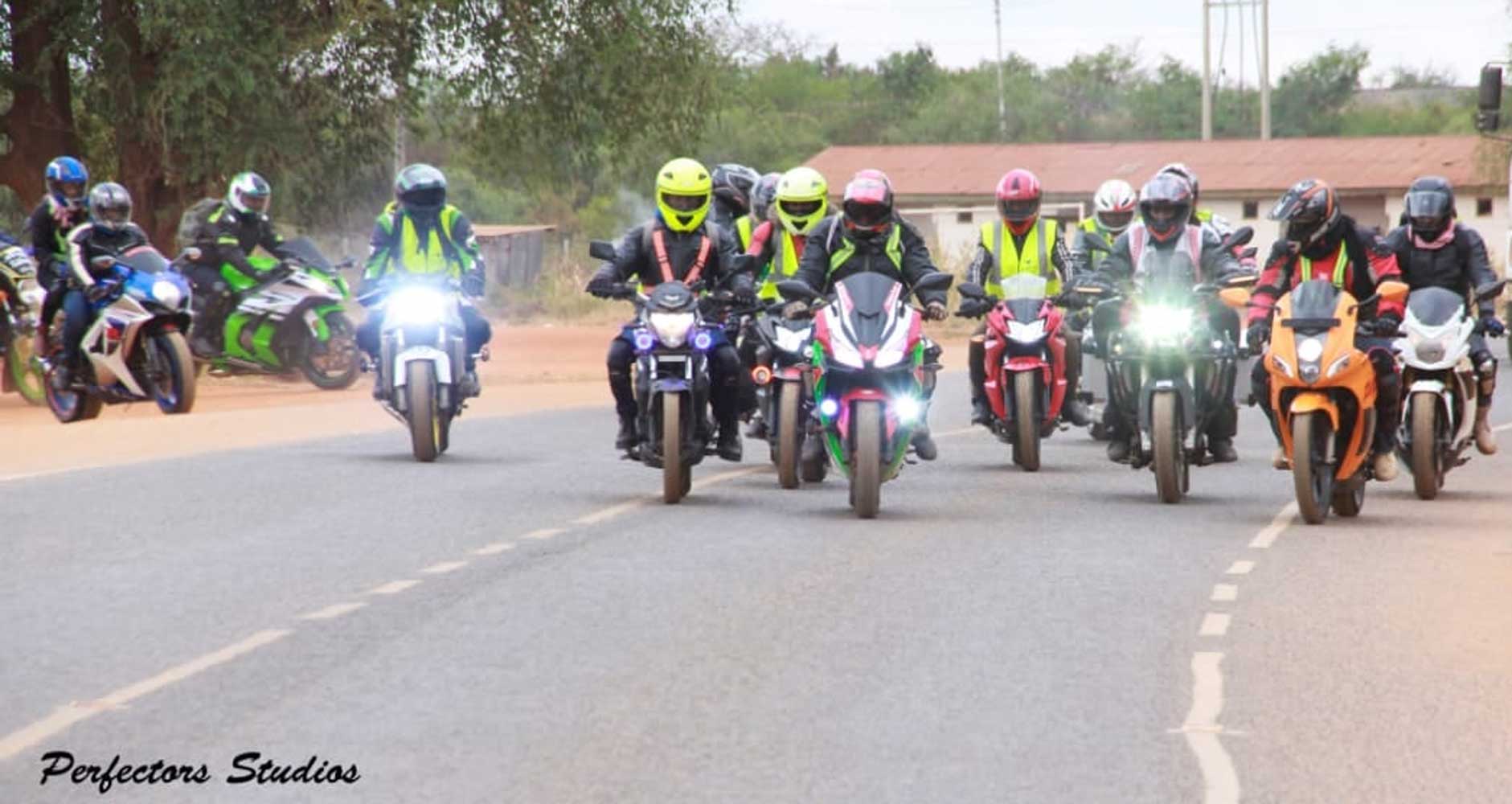
Group rides

Round the Aberdares
5 July 2021
Taita Rocks
6 July 2021Written by Arlince Evans, Photos by Musyoka Vanse
The Weekend was lovely, Started with welcoming THE EASTERN BIKERS to Mombasa , thanks to Coast Riders-Mombasa Chairman Ali Fedha even on short notice managed to assemble his crew to welcome the visitors. For the first time meet Tonnie Gathogo and many others. Musyoka Vanse we've met many times and he kept me updated of there travel plans.
The Club unity was amazing but the ride was so random No leader on ride and no sweeper on ride, so I had to do both, being a ride leader and a sweeper, anyway I enjoyed it. THE EASTERN BIKERS you are welcome back any other day.
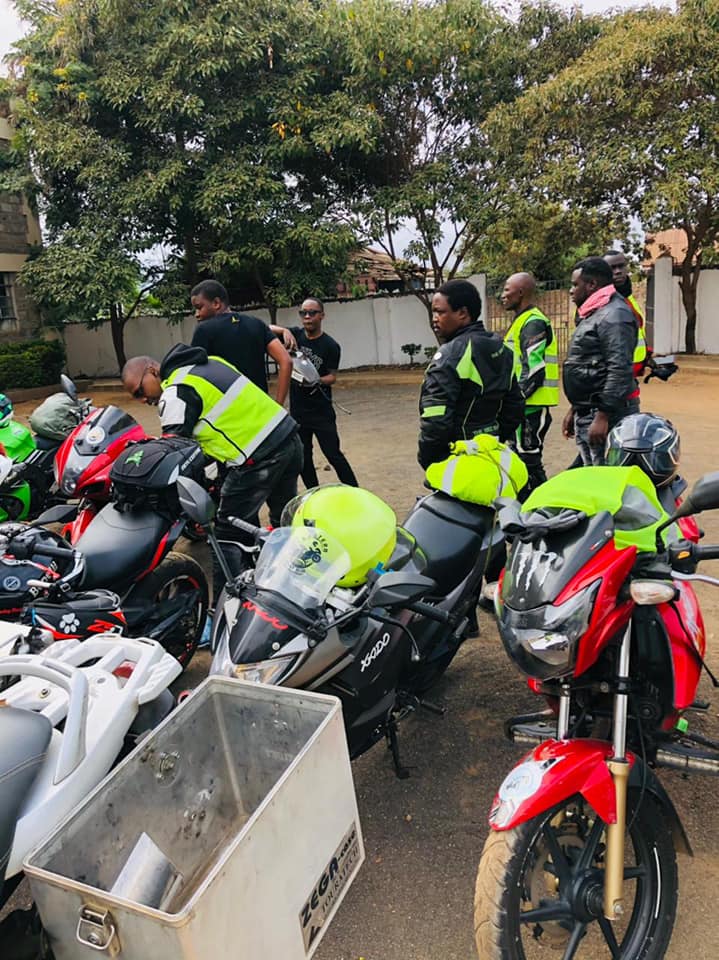
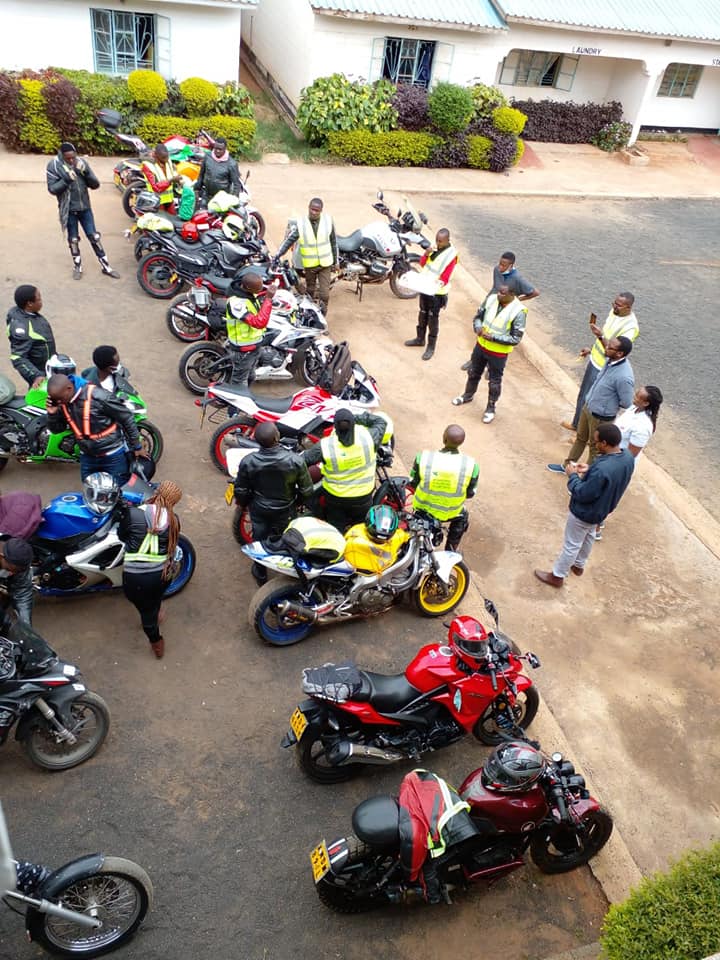
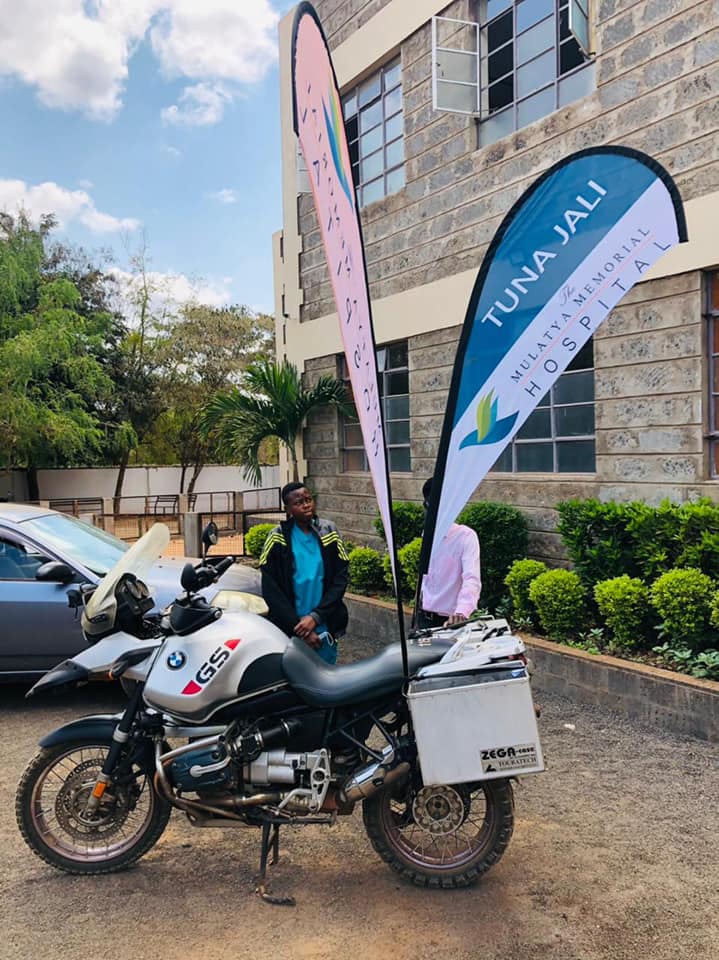
Riding in a group, especially in busy urban areas, can be either fun and empowering or stressful and even dangerous. Follow the guidelines in this narration, and hopefully your next group ride will be an enjoyable and safe experience.
For some, group riding is a quintessential part of the motorcycling experience, a rolling social gathering that happens as naturally as a family party. It’s a fun way to keep a group together when traveling. Yet even seasoned riders, if they spend most of their time solo or don’t know the others in the group well, can feel a bit unsure about the rules, expectations and etiquette of group riding. So to help you navigate the dos and don’ts of riding in a group and become the person everyone likes to ride with, I’ve put together this handy primer.
The Basics
Staggered formation
You’ve probably noticed how groups of riders space themselves out within their lane; we call this “staggered formation.” The purpose is pretty simple: it allows each rider a clear view ahead, along with space to the side for any quick or sudden maneuvering in the case of road hazards like potholes, rocks, critters, debris, etc. The leader is typically in the left portion of the lane, rider No. 2 is in the right portion, rider No. 3 in the left and so on. The Motorcycle Safety Foundation recommends spacing yourself so that there is a Ten-second gap between you and the rider directly in front of you . As speeds increase, that means a longer distance, and at slow speeds (especially in heavy traffic areas) that means closing ranks and tightening up the formation.
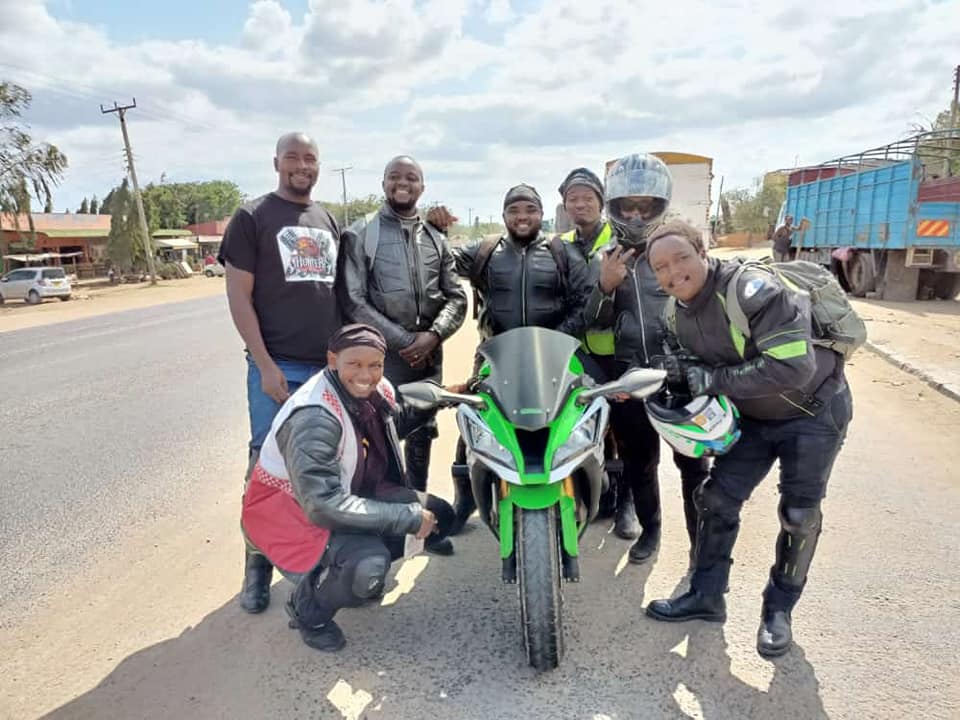
Eastern Bikers newest...a fire zx10.undisclosed location
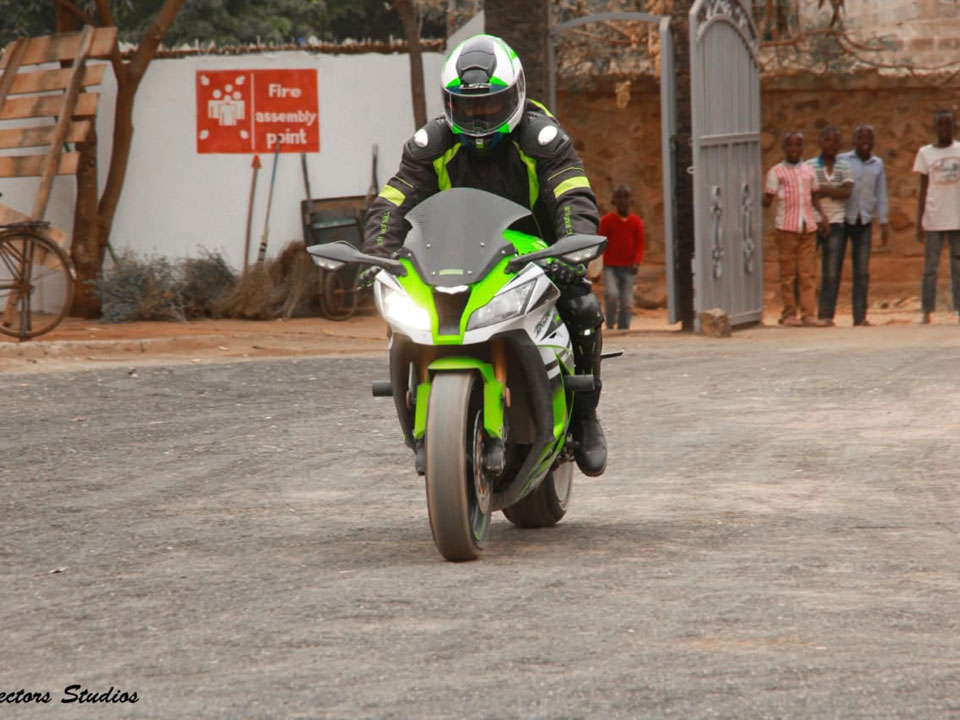
Dr James Muoki...ZX for days.a very humble gent.
Who rides where?
Put an experienced, responsible rider in the lead position. The leader should obviously know the route you’re taking. The least experienced rider in the group goes next, in the No. 2 position behind and to the right of the leader. The last position, also called the “sweep,” should be another highly experienced rider. The sweeper should carry a first aid kit and tools, and should also know the route in case the group gets separated.
Group size.
Try to keep your group manageable
between Ten and Fifteen riders is a good size.
If necessary, break up large groups into smaller ones.

on mission....we visited the grave of our late brother @athman kijo, paid our respects and lit a candle.watch over us brother.
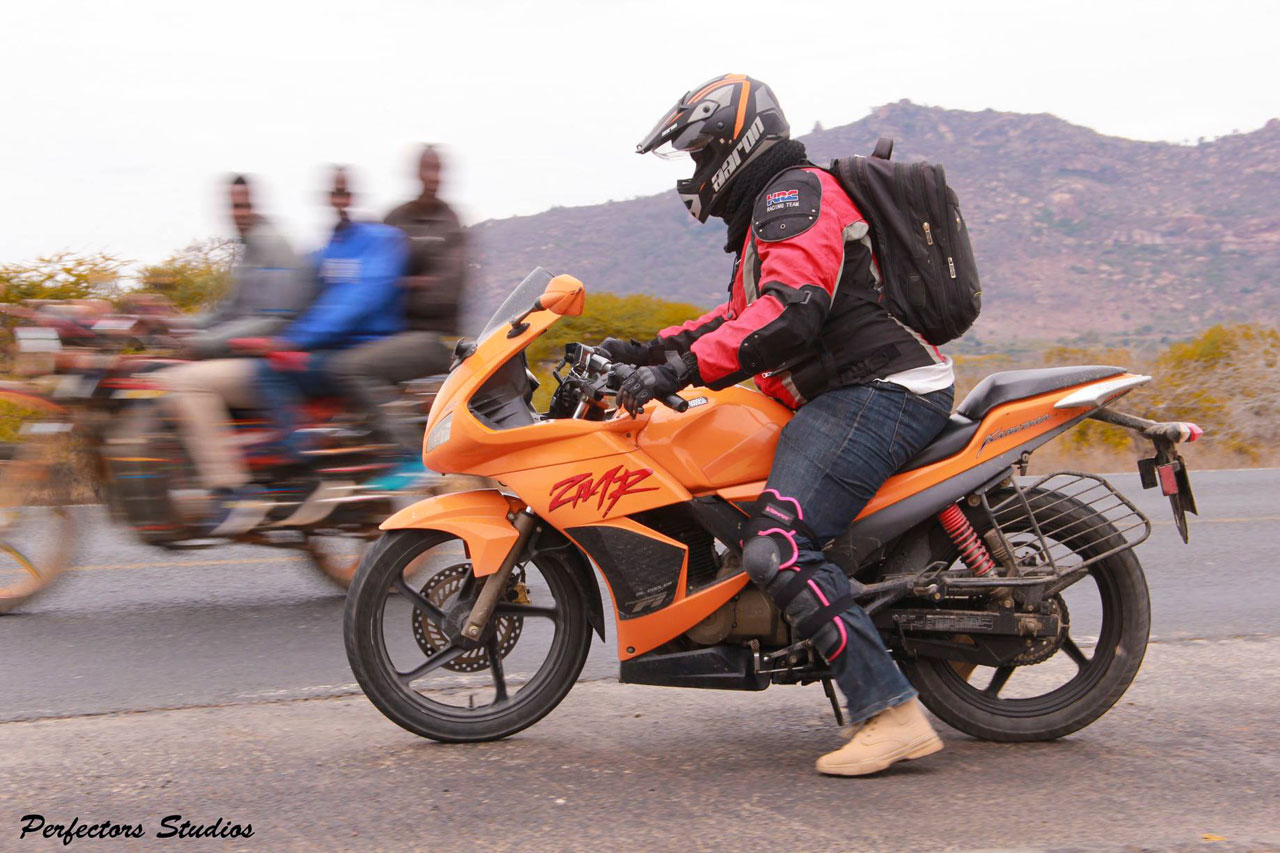
Andie on that Karizma vibe

Alex Njiru...Honda is for life
Lane changes.
Good leaders will be watching their mirrors, and will wait until there is a large enough space for the whole group to move over. Sometimes that’s just not possible, in which case the riders make individual lane changes, returning to their positions within the new lane. Maintain your speed when changing lanes! Remember that there are riders behind you who need to move over as well.
Communication.
This is especially important in a group. The leader will often activate his or her turn signals early; following riders should also use their signals, essentially passing the message back. Some groups also like to use hand signals for upcoming turns: left arm straight out to the side for a left turn, left arm raised at a 90-degree angle for a right turn. There are a few other “universal” hand signals in the moto world: extending a hand down and opening and closing your fist tells another rider their turn signal is still on, and sticking a foot or hand out indicates a hazard in the road on either the left or right side. Each group has their own way of communicating, so don’t be afraid to ask before you leave!

Just a young soul full of life...this GS is everything.
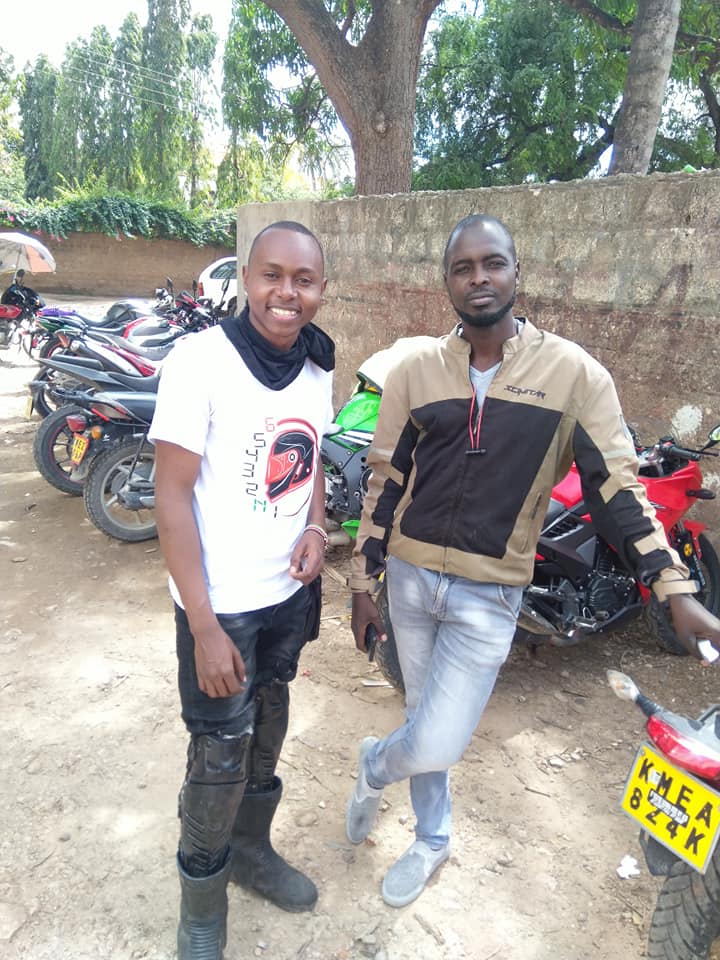
Nothing much here, just a photo of more than one Evans......cheers to brotherhood.
Curves
When the road gets twisty, throw the staggered formation out the window. Forming a single file line gives you the space you need to lean and adjust your line if necessary. Remember this might also mean giving the rider ahead of you some extra space.
Overtaking
Never blindly follow riders ahead of you when they pull out to overtake a car. Move over to the middle portion of the lane and wait until you have a clear view of the road ahead. That may mean waiting until the rider in front of you is safely back in the lane ahead of the vehicle you’re overtaking. Then check your mirror to make sure another speed demon isn’t trying to make the overtaking from behind you.
her majesty flexing past Voi town
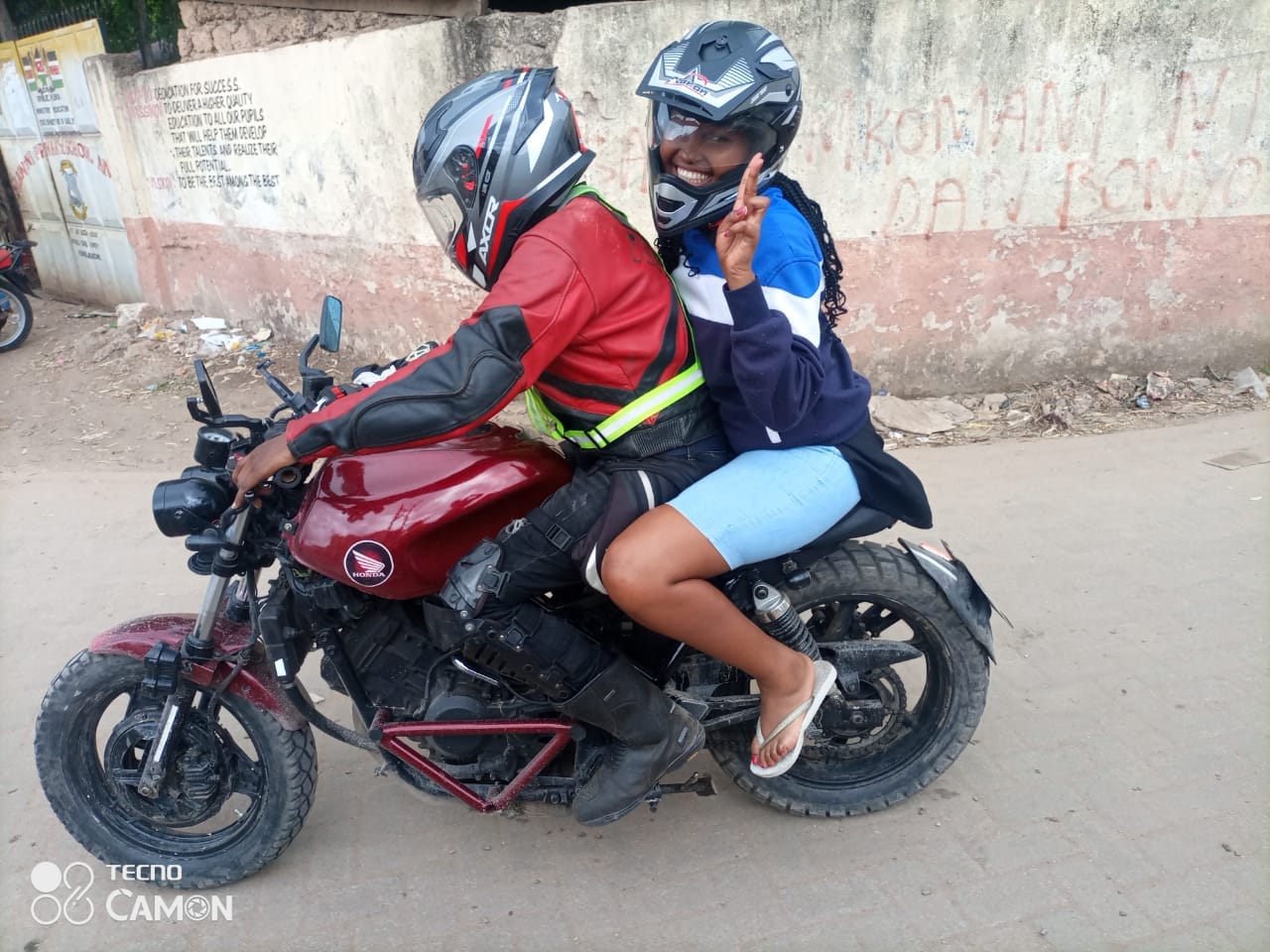
Pixie got some love.✌️

a life, a ride, a dance.
Being Overtaken
Being passed by a single vehicle is easy: just let them go. There may be times when the vehicle doesn’t have the room to get around the whole group in one go. Don’t take offense, even if they’re obviously just being impatient. Open up a space and let them back in. There’s no sense in riding too close and putting yourself and the rest of your group in danger.
But what if it’s another group of riders passing yours? Well, first off get in the habit of watching your mirrors. That way you won’t be startled when riders start blasting past you. As the sweep rider, if you see another group approaching from behind, move to the right and wave them past. This lets them know that
a) you see them, and
b) you’re going to maintain your position to the right to safely allow them to pass.
As a mid-pack or lead rider, keep an eye on your mirrors. If the headlight of the bike behind you moves to the right, look for passing riders and move left as well, waving them by. This can take time as the second group filters past, but just hold your left-side line and give your fellow riders a wave as they move on.
Staying together and on-track. Each group has its own procedure for this, and it’s something that should be discussed before you leave. Some groups prefer to stay in a pack at all times, with the leader pulling over immediately if you get separated, for example at a red light. Others, especially on long trips or when riding off-road, use the buddy system or back-marker technique. When approaching a turn or confusing intersection, check your mirrors. If you don’t see the rider behind you, pull over and wait. Basically you’re making sure that each turn is marked, and the sweep rider can pick up any stragglers.

Beach time, we are the fun package.
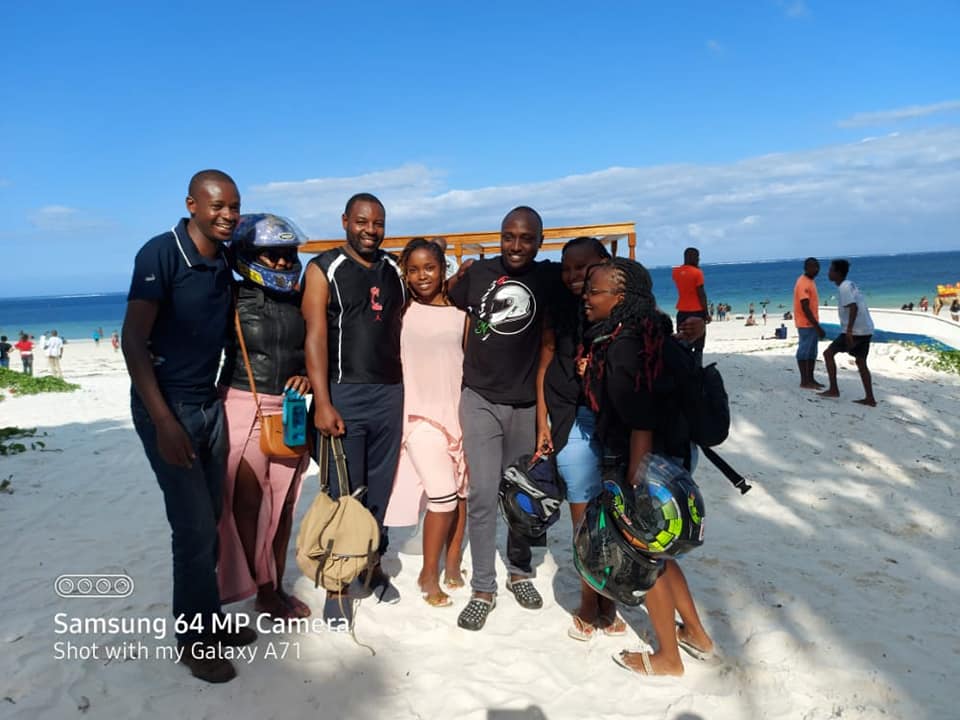
Watu wa bara wakiona maji
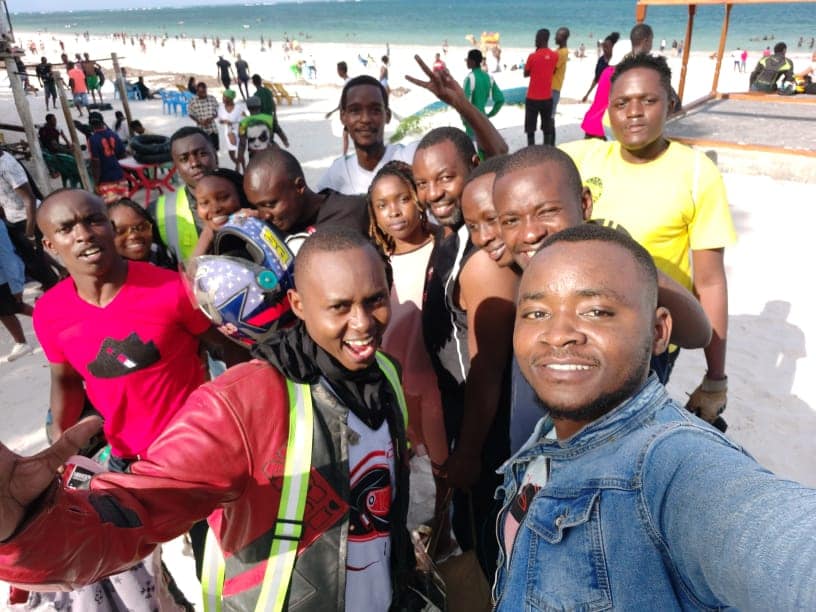
Mkamba hapendi kutoa jacket.

Mkamba akiona maji....apa nlikua nafkiria kutumana sabuni from machakos
Advanced Course
Now that you’ve got the basics down, let’s talk about being a better group rider. Instead of blindly following the tail of the rider in front of you like a bored packhorse, being aware and proactive will make you a more proficient, safer rider with whom others want to ride!
Awareness
This is something you should be practicing anytime you’re on the bike, not just in a group. You’re always scanning ahead, checking your mirrors and watching the patterns of other drivers, right? Don’t get lazy just because you’re surrounded by your “pack!” Watch your leader. If your group is stuck behind a slow-moving vehicle and the leader starts to peer around them, you can guess that a pass is imminent. Be ready to change lanes or pass quickly, safely and efficiently, keeping the whole group moving. If you’re on a multi-lane highway, the sweep rider could move over early and “set a pick” for the riders ahead, keeping the lane open for them to easily slide over.
Look farther than 20 feet ahead of you. See that “stale” green traffic light that could be getting ready to turn yellow? Be prepared for the rider in front of you to hit the brakes if the light changes. See the guy in the SUV in the next lane over, slowing down and looking over his shoulder? He likely wants to change lanes — keep an eye on him, and consider slowing to let him in, especially if your group is a large one.
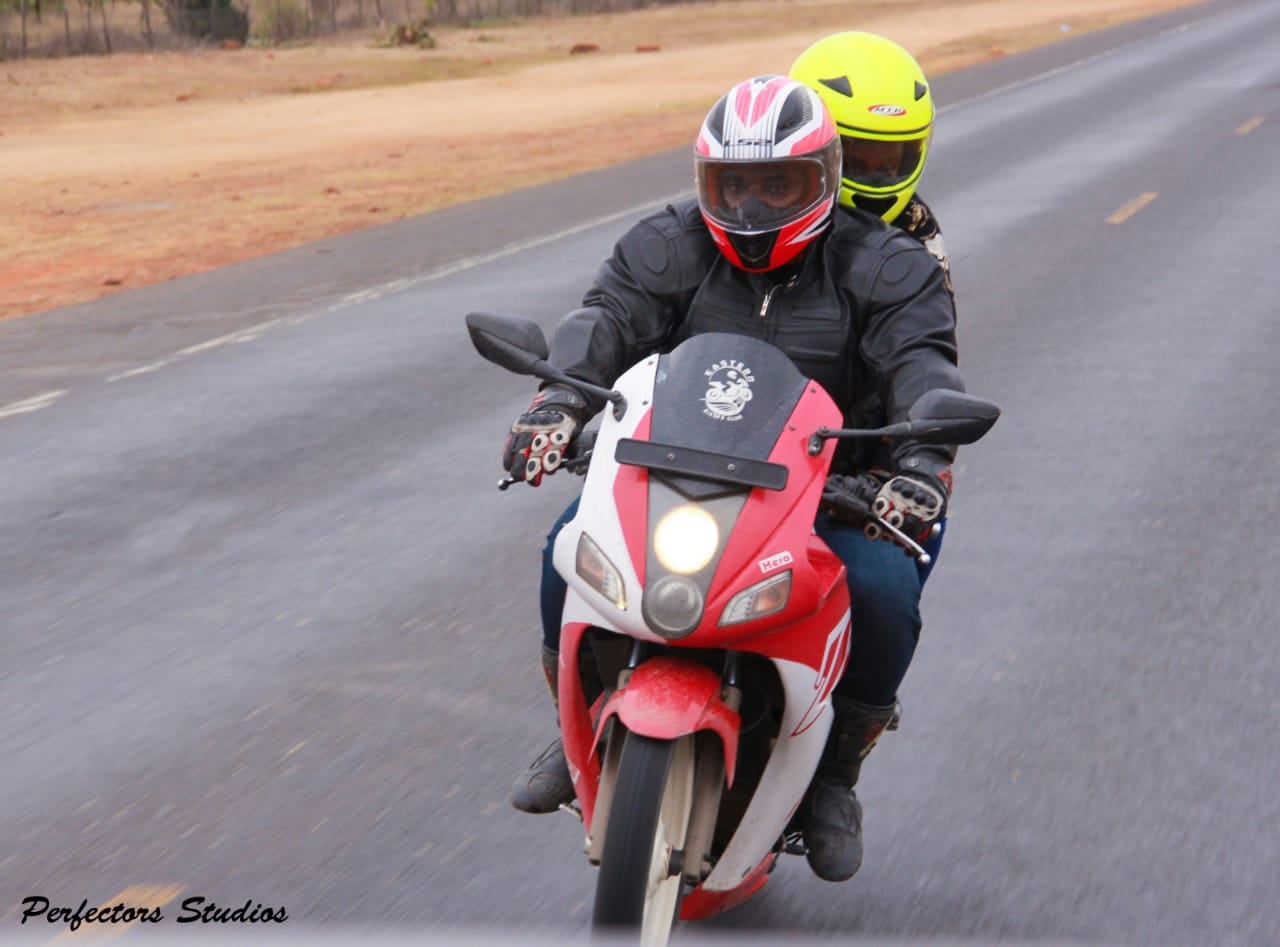
Vitalis and assistant on that Karizma vybe

Steve Mose & Chrystabel....for what is life? we ride
Go with the flow
Group riding rules are not always black and white. For example, on long highway stretches it’s common for the group to spread out as everyone finds their own pace. Just be sure that you follow your group’s established procedure for back marking at turns. In areas of heavy traffic and slow speeds, try to keep your formation tight. Don’t be “that rider,” who dawdles and allows large gaps to form between you and the rider(s) ahead, then bolts through yellow lights at the last second, leaving those behind high and dry or forced to attempt to make the light. If your group hits some twisties and you find that you can’t keep up, don’t worry, just ride at your own pace. Wave the rider(s) behind you past if they want to go faster; at minimum, the sweep rider will stay with you and the rest of the group will wait for you to catch up ahead. This is part of the fun of group riding: you know your “pack” will take care of you.
Try to be consistent. It’s a lot easier to ride with people who are predictable. Hold your line, be smooth and steady with your speed and pay attention to your surroundings. Your fellow riders will thank you!

Sorting an issue with Apache in the wild, all hands on. Others were watching out for wild animals...this is real brotherhood.

Sunset moments as we bid each other goodbye at Konza junction.
Final Exam
No, there isn’t actually a final exam, but I do want to leave you with this parting advice, and it’s the most important: ride your own ride.
Ultimately, we are all responsible for ourselves and only ourselves. Even though you’re in a group of other riders, you alone are in control of your bike and are therefore on a solo ride. If the group is doing stuff that makes you uncomfortable, don’t do it. Ride your own pace, don’t run the red light even though the two riders ahead of you did, and if you need to take a break, signal to your group and pull over. And don’t attempt an unsafe pass — your group won’t leave you behind .



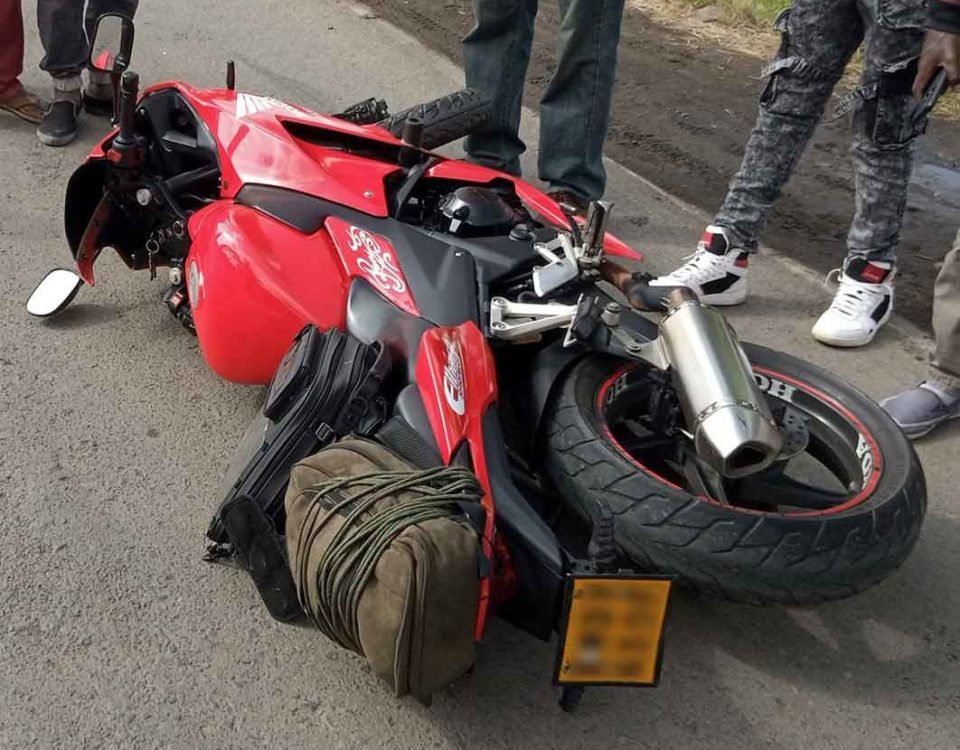


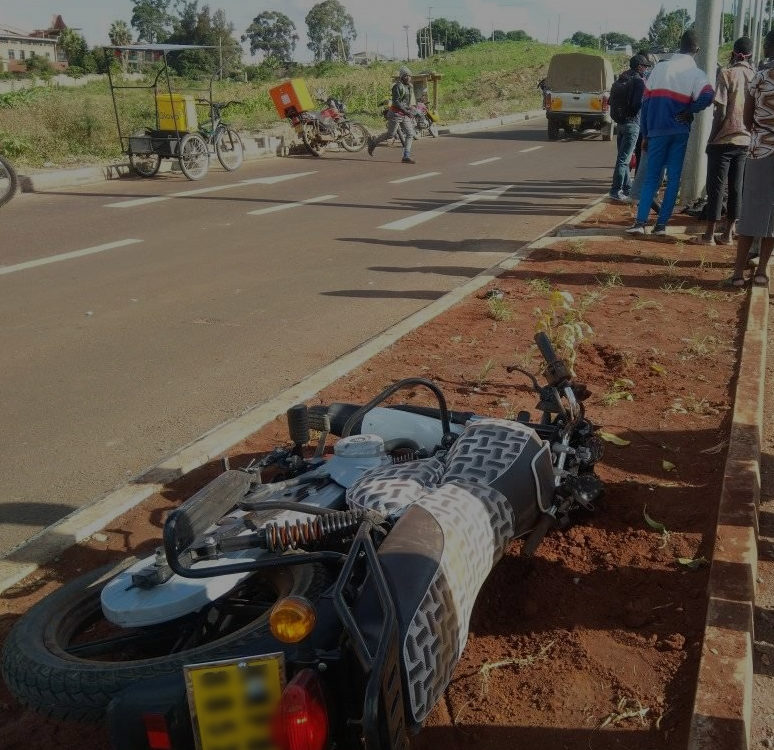
2 Comments
am biker but I don’t I have safety gear I likely asks well wishes to help me
Hey, this is Romeo spear and like your group rides, can I join?